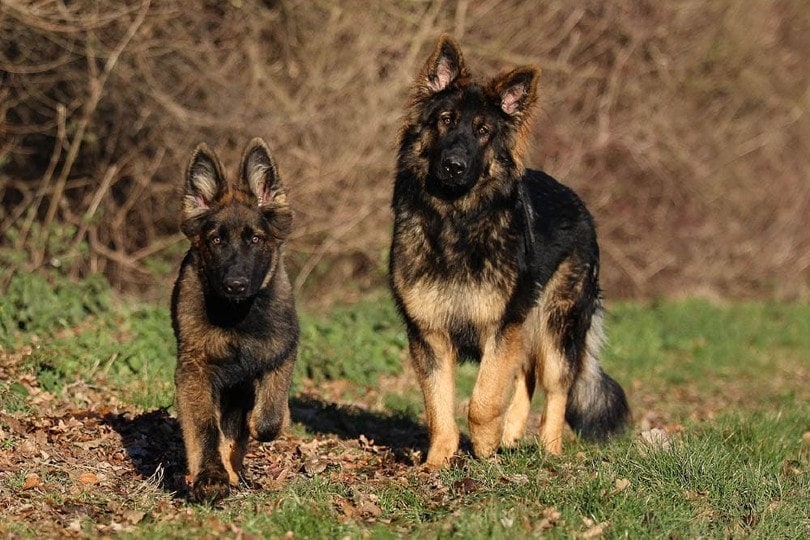Are Australian Shepherds Born With Tails? Vet-Reviewed Facts & Pictures

Updated on
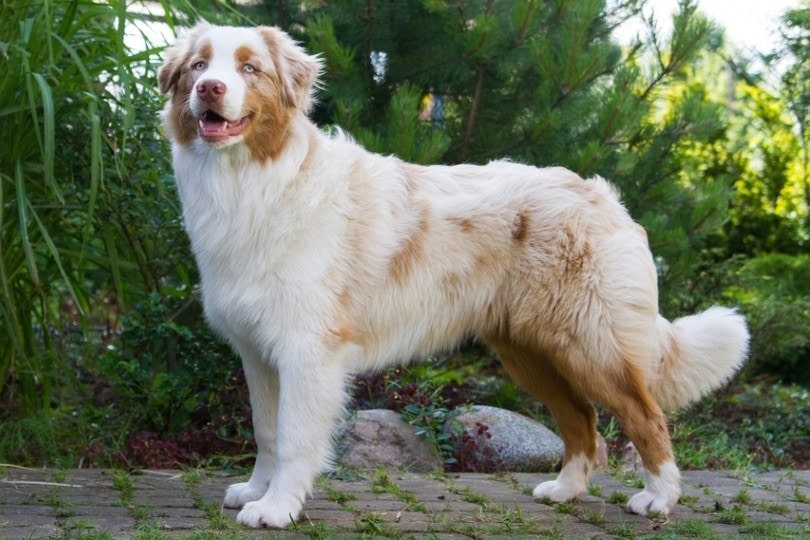
Although the name implies this dog originated in Australia, the Australian Shepherd first appeared in the United States in the 19th century. The dog became invaluable to Basque immigrants who used the canines to herd sheep and today, the breed is favored among shepherds and ordinary pet lovers.
If you’ve looked at several pictures of Australian Shepherds, you may have noticed that most of them appear to have short or bobbed tails.
Are All Australian Shepherds Born with Tails?
Why do some Australian Shepherds have no tail? Around 20% of Australian Shepherds are born with bobbed tails, and others born with long tails often have them cut after they’re a few days old. Tail docking is a controversial subject that has convinced some countries to ban it entirely. Thirty countries, including Sweden, Poland, Germany, The Netherlands, Italy, and Scotland have outlawed the practice. Some countries also forbid Australian Shepherd breeders from importing bobbed-tail varieties from foreign countries.
When you’re thinking about purchasing a puppy, you’ll probably wonder if it’s better to have an Australian Shepherd with a tail or one without. The answer to that question can depend on your personal beliefs about tail docking, and we can discuss both sides of the docking debate to help you make an informed decision.
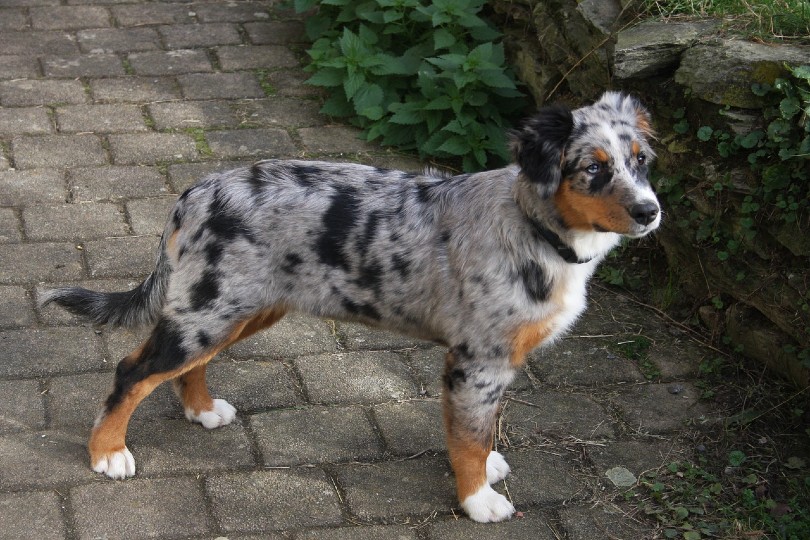
The Breeding and Docking Controversy
When an Australian Shepherd is born with a bobbed tail, it results from the T-gene mutation. The T-gene, also known as the C189G gene, is a recessive gene that produces a bobbed tail when at least one of the parents carries the gene. When both of the parents lack the gene and have long tails, they produce long-tailed offspring.
Although a higher percentage of dogs are born with longer tails, the bobbed tail look is favored by shepherds, breeders, and show dog enthusiasts. However, because breeding Australian Shepherds for bobbed tails is complex and potentially fatal, most reputable breeders prefer docking the tails to breeding for the T-gene.
Risks of Bobbed-Tail Breeding
Kennel clubs, government agencies, and animal rights groups continue to argue about the validity and benefits of tail docking, but one point that the groups agree on is the danger of breeding for short-tailed Australian Shepherds. When both the male and female dogs carry the C189G gene, they risk producing unhealthy offspring. Puppies with a double inheritance of the C189G gene mutation (homozygous) can perish in the womb or die shortly after birth.
The danger of breeding two parents with recessive genes illustrates the necessity of following strict breeding procedures. Certified breeders spend a great deal of money on DNA testing to ensure their offspring are healthy, but smaller operators that are less financially stable are less likely to engage in testing. When you’re researching breeders, be sure to verify their testing procedures to ensure their breeding methods are sound. Some breeders can show you documentation on the parent’s bloodline and even provide a detailed pedigree of the dog’s lineage.
Medical Conditions Associated With Bobbed-Tail Shepherds
If you’re trying to decide between a long-tailed shepherd and one that has a naturally bobbed tail, you should be aware of the medical problems that are more prevalent in short-tailed puppies.
Imperforate Anus
This condition can be fatal without corrective surgery. It’s a congenital defect that prevents the anus from fully developing an opening.
Spina Bifida
This spinal deformity has varying degrees of severity, but in the most extreme cases, the animal’s malformed spinal cord is visibly noticeable.
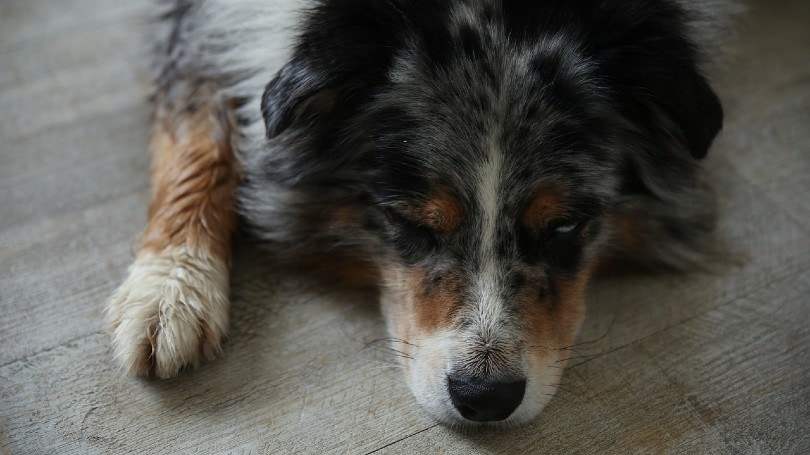
Reasons for Docking
The reasons for docking a puppy’s tail can be divided between the cosmetic and the medical. Regardless of its effect on the dog’s health, the bobbed-tail trend began with the guidelines established by late 19th-century kennel clubs.
Cosmetic Reasons
Kennel clubs like the AKC, CKC, and ASCA only allow Australian Shepherds to enter competitions when their tails are four inches or shorter. This show dog standard has persuaded breeders and dog owners to crop their Australian Shepherds’ tails shortly after birth. While most choose to have the puppies’ tails shortened after they’re three days old, others have waited until the dogs are mature before the tail is docked. However, the pain and recovery period are much harder on adult dogs.
Hepper does not support tail docking. Instead, allow your Aussie to express like other dogs by allowing their tails to grow naturally.
Medical Reasons
Around 80% of Australian Shepherds are born with long tails, but their “long tails” are not as long or healthy as those of other breeds. Unlike other breeds with long tapered tails, the Australian Shepherd’s tail does not taper as much, and the tip is more brittle and vulnerable to injuries. Clipping the end off can keep the dog from injuring the tail when it’s whipped into a heavy object or against a chain-link fence.
Since Australian Shepherds have been used as herding animals for centuries, their bobbed tails are advantageous in a wild, outdoor environment. Their tails can become caught in shrubs, briars, and other obstacles if they’re too long. A wounded tail can cause a lot of pain to the dog, and in some cases, it can become infected and require amputation.
Docking also keeps the dog’s coat healthy. Long-tailed Australian Shepherds sometimes develop matted fur near their hindquarters when bits of feces and dirt cling to their tails. Removing the tail’s end keeps their bottom clean and sanitary. Although docking clearly has some medical advantages, you can still raise a healthy long-tailed dog as long as the animal does not have issues with tail injuries.
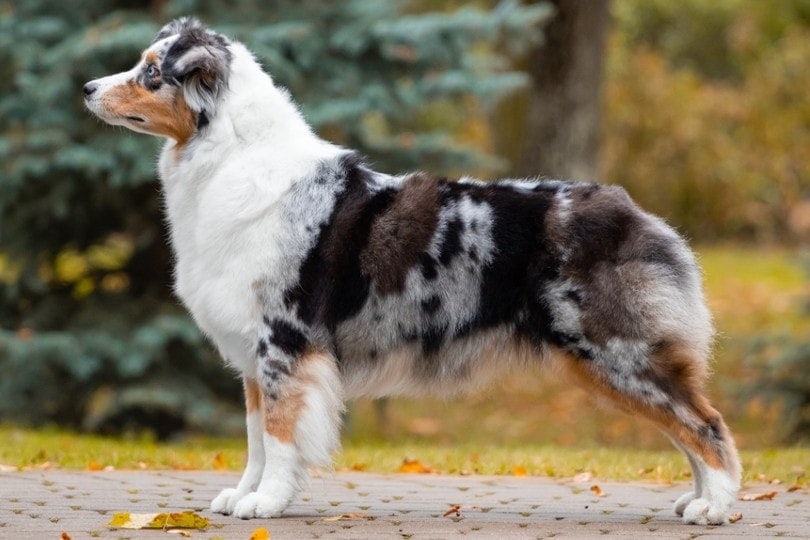
Is Docking Painful or Cruel?
Chopping off the end of a young dog’s favorite appendage seems cruel and unnecessary to some, but others argue that docking prevents future complications that are more detrimental to the animal’s health. While some adult Australian Shepherds have their tails shortened, the dogs typically have their tails docked when they’re 3 days old or less.
You may ask, do puppies feel the same level of pain as adults? This question is frequently debated between kennel clubs and animal rights groups. Supporters of tail-docking contend that puppies have underdeveloped nervous systems, and the pups may feel some discomfort, but the memory of the pain is short-lived.
On the other side of the debate, animal rights supporters say that even puppies can remember the pain and should not be subjected to cosmetic surgery. Some activists object to cutting off the tail because the puppies are not put under anesthesia before the procedure. However, vets warn against using anesthesia on newborn animals that are not strong enough to handle the medication. The risk of an adverse reaction to anesthesia has persuaded vets and breeders to dock puppies’ tails without the drugs.
How Is a Tail Docking Procedure Performed?
The most common method of removing a puppy’s tail involves using surgical scissors. The puppy’s tail is chopped off with scissors, and the wound is immediately cauterized to stop the bleeding. The entire surgery lasts only a few minutes, and the puppies seem to heal fast without any noticeable side effects.
It does not sound like a complex procedure, but it should only be performed by a veterinarian or certified breeder. If the tail is not removed in the correct spot between the vertebrae, the wound can bleed extensively and endanger the animal’s life.
Banding is also used to create bobbed tails, but it’s far less common. It involves wrapping a band between the vertebrae to cut off the circulation to the end of the tail. After a few days, the rotten end falls off, and the puppy is left with a bobbed tail.
Why Choose an Australian Shepherd as a Pet?
Whether you like the cute bobbed tail or prefer the long-tailed canines, Australian Shepherds make excellent pets. Because of their hyper nature, they need plenty of room to exercise and may feel cramped in a small apartment without a yard.
- They’re always up for a game and love to retrieve balls and frisbees.
- The dogs are incredibly intelligent and learn tricks quickly.
- They have a life expectancy of 12 to 15 years.
- They’re affectionate and loyal.
- As guard dogs, Australians are exceptional, and they’re very protective of their families.
- They’re ideal for owners who love the outdoors and aren’t afraid to go jogging with their dogs.
- If you have other pets, your Australian Shepherd may offer to herd them.
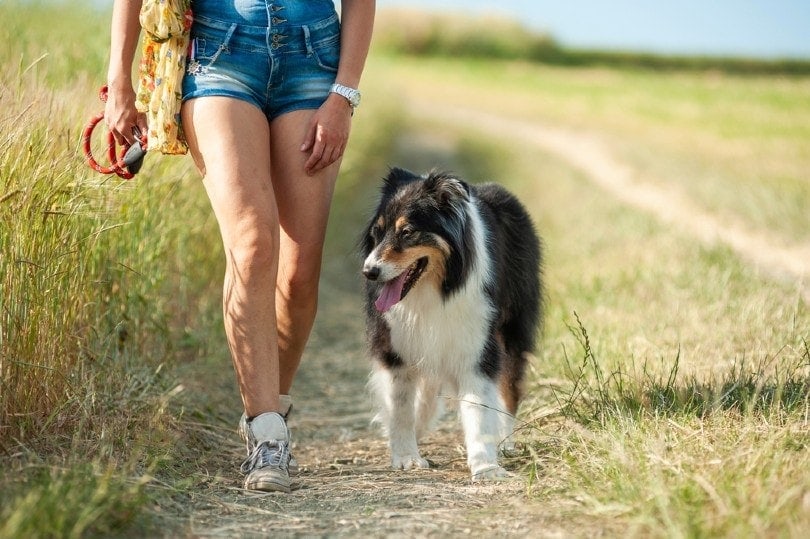
Final Thoughts
The Australian Shepherd has a long history of herding animals, and their aptitude for herding helped influence the decision for breeders to favor short-tailed traits. Although bobbed tail dogs are less vulnerable to tail injuries, breeders are careful when choosing breeding partners. Female and male Adults with recessive genes can produce unhealthy puppies that can die in the womb. Because of this risk, most breeders will crop the puppies’ tails instead of breeding for the bobbed trait.
Cropping their tails when they’re young is considered by some more humane than waiting until the dogs are adults, but some dog owners prefer to keep their tails long. Whether it has a long tail or a bobbed one, the Australian Shepherd is a unique, energetic creature that provides years of companionship and love.
Featured Image Credit: Eve Photography, Shutterstock




